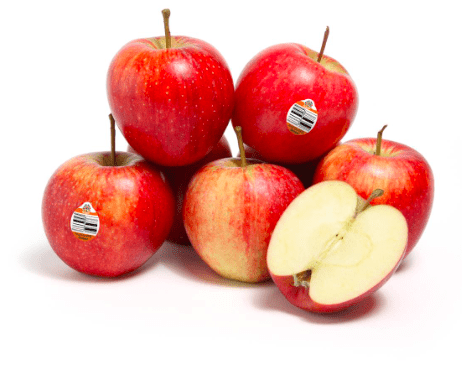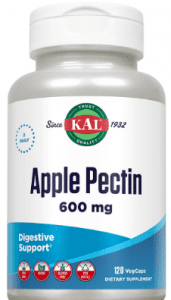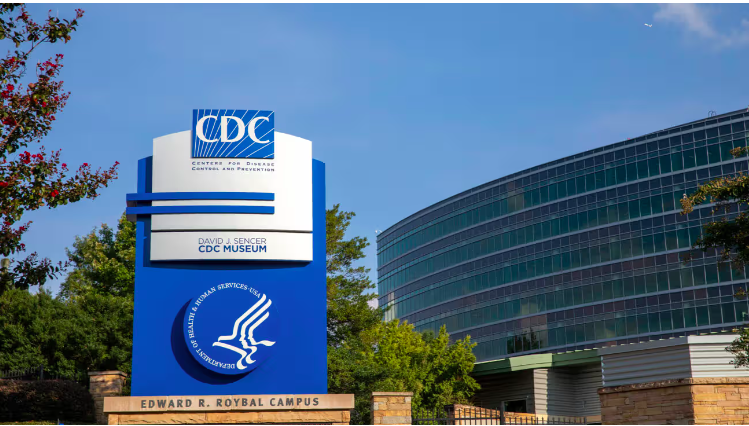Health
The Astonishing Health Benefits of Apples for a Strong and Healthy Heart

Last Updated on May 23, 2023 by Nurse Vicky
The Astonishing Health Benefits of Apples for a Strong and Healthy Heart
Apples are not only delicious and refreshing but also packed with an array of nutrients that contribute to overall health and well-being. In this comprehensive article, we will delve into the extraordinary health benefits of apples, focusing particularly on their positive impact on heart health.
From their rich antioxidant content to their ability to regulate cholesterol levels, apples have been hailed as a natural way to support cardiovascular health. Join us as we unravel the mystery of how this humble fruit can play a crucial role in maintaining a strong and healthy heart.
Apples and Antioxidants: Shielding Your Heart Antioxidant Powerhouse of Apples
Apples are a rich source of antioxidants, which are essential in combating harmful free radicals in the body. These free radicals can cause oxidative stress, leading to cellular damage and increasing the risk of heart disease. The antioxidant compounds found in apples, such as flavonoids and polyphenols, act as protective shields, reducing inflammation and minimizing oxidative stress in the cardiovascular system.
Apples and Cholesterol: Balancing the Scales Regulating Cholesterol Levels with Apples
High cholesterol levels pose a significant risk to heart health, contributing to the development of atherosclerosis and other cardiovascular conditions. Apples, especially their soluble fiber content, have been found to play a vital role in maintaining healthy cholesterol levels. The soluble fiber, known as pectin, found in apples helps reduce the absorption of cholesterol in the gut, effectively lowering LDL (bad) cholesterol levels.
Apples and Blood Pressure: Nurturing Healthy Hearts Blood Pressure Management with Apples
Hypertension, or high blood pressure, is a prevalent risk factor for heart disease. Apples contain potassium, a mineral known for its ability to regulate blood pressure levels. Potassium helps relax blood vessel walls, facilitating smoother blood flow and reducing strain on the cardiovascular system. Incorporating apples into a balanced diet can be a beneficial strategy for maintaining healthy blood pressure levels.
Apples as a Defense Against Heart Disease
Heart disease encompasses various conditions that affect the heart and blood vessels. The consumption of apples has been associated with a reduced risk of developing heart disease. The unique combination of antioxidants, fiber, and other heart-healthy compounds found in apples supports cardiovascular health by reducing inflammation, managing cholesterol levels, and improving overall heart function.
Stabilizing Blood Sugar with Apples
Maintaining stable blood sugar levels is crucial for heart health, especially for individuals with diabetes or prediabetes. Apples, despite their natural sweetness, have a low glycemic index, meaning they have a minimal impact on blood sugar levels. The fiber content in apples also aids in slowing down the digestion and absorption of sugars, contributing to improved blood sugar control and reduced risk of heart complications.
Conclusion: Unlocking the Heart-Protective Secrets of Apples
In conclusion, apples are not just a delightful snack but also a true ally in maintaining a strong and healthy heart. Their remarkable combination of antioxidants, fiber, and other vital nutrients make them an exceptional addition to a heart-healthy diet.
From shielding against oxidative stress and regulating cholesterol levels to managing blood pressure and stabilizing blood sugar, apples offer a multifaceted approach to cardiovascular well-being. Embrace the natural goodness of apples and savor their remarkable health benefits to promote a thriving heart and a happier, healthier life.
Quercetin

The antioxidant quercetin has been known to have numerous health benefits. Its ability to protect the liver from damage is one of these benefits. Apples contain a lot of this chemical, but some people are more sensitive to its effects than others.
Quercetin is also present in onions. Onions have high amounts of quercetin in their flesh, so consuming a lot of them can actually improve your health. Other benefits of quercetin may include lower blood pressure and lower sugar levels.
It also may help reduce allergic symptoms like sneezing and itchiness. More research is needed to confirm this effect. However, it is an impressive antioxidant. It may even help reduce the symptoms of asthma and allergic rhinitis. So, if you’re prone to these problems, it’s definitely worth trying.
Pectin

One of the best-known health benefits of pectin is its ability to prevent colon cancer. It is able to inhibit the growth of colon cancer cells in mice by binding to the fecal enzyme beta-glucuronidase.
Animal studies, it has also been shown to reduce the risk of colon cancer by inhibiting the formation of new blood vessels in the colon. Pectin is also a beneficial agent for improving cholesterol levels and is readily available in powder and capsule form.
Apples, oranges, grapefruit, and peaches contain five to 10 percent pectin fiber Another health benefit of pectin is its role in regulating blood pressure. Because it can inhibit the breakdown of fat in the digestive tract, it can help prevent hypercholesterolemia.
Studies have shown that eating nine grams of apple pectin per day could reduce systolic and diastolic blood pressure. Pectin has also been shown to lower total cholesterol levels and LDL cholesterol, which are both linked to heart disease.
Antioxidants
The antioxidants found in apple peels may be responsible for their high resistance to superficial scald development. Antioxidants in apple peels increase with harvest time and are indicated by TWRC or percentage inhibition of lipid oxidation.
Increasing preharvest temperatures at 10C and the presence of ethephon, which induces ripening, increased the levels of total water-soluble reducing compounds and a-tocopherol and carotenoids in the peels of apples. Several studies have investigated the antioxidants found in apple peels.
Researchers from SCALBERT, A., and SINGLETON, V.L., investigated polyphenols and phenols. The researchers also found a relationship between polyphenols and scab resistance. The researchers concluded that phenolics in apple peels may be beneficial for both dietary health and food-processing applications.
Several millions of pounds of waste apple peels are produced in New York State each year, and peels contain the majority of antioxidants. These fruit peels may have commercial potential as a valuable food ingredient.
Soluble fiber
Phytoestrogen, an antioxidant found in apples, inhibits certain enzymes in the body that promote cellular growth and may help fight diseases like cancer. The fruit’s other benefits include slowing the absorption of sugar and improving metabolic balance.
Eating more apples can help prevent several cancers. They are also rich in antioxidants such as quercetin, which can improve the immune system and prevent the onset of asthma symptoms.
One apple has more than enough soluble fiber to meet the daily requirements of adults. A small unpeeled apple has 3.6 grams of soluble fiber or 14 percent of your daily recommended value.
A large peeled apple contains 63 calories and less than one-fourth the amount of fiber. The soluble fiber in apples is found mostly in the skin, which is more concentrated. The fruit contains approximately 30 percent soluble and 70 percent insoluble fiber.
Cancer prevention
Apples are known to be an excellent source of antioxidants, fiber, and other nutrients that have several health benefits, including the reduction of risk for several types of cancer. Research shows that eating one apple daily lowers the risk of developing breast cancer by 17 percent and eating three or more apples reduces the risk by 40 percent.
The phytonutrients in apples may also reduce the risk of colon cancer by helping to keep the digestive system healthy. Studies have shown that rats fed with apple skin extract had a 43 percent lower risk of developing colon and liver cancers than rats fed with the same diet.
A meta-analysis of five observational studies found that apples significantly reduced the risk of colorectal and breast cancer. However, the evidence for Apple’s prevention of lung cancer was not as strong.
In case-control studies, researchers found a significantly lower risk of developing colorectal and breast cancer in women who consumed apples daily. But the effect was not significant in cohort studies. The low number of studies may be a contributing factor. In addition, there are many factors that may cause the results to differ.
Additionally, many ask
What are the top five ways that eating an apple enhances one’s health?
Apples are also credited by scientists with assisting in the following ways:
- Your capacity in the lungs.
- Your beating heart.
- I suffer from asthma.
- Wellness of the bonesLoss of body weight.
- Your brain (which reduces the symptoms of Alzheimer’s disease and memory loss associated with aging).
- Your immune system.
- The condition of your gut.
What benefits can eating apples provide for the body?
Image result for What are the positive effects that eating apples have on one’s health Apples includes phytochemicals and fiber, both of which have antioxidant effects. These benefits may prevent oxidative damage to a cell’s DNA, which is a step in the progression of cancer.
Research conducted on animals and in cells has shown that these compounds have the ability to inhibit the growth of new cancer cells as well as the spread of cancer cells that already exist.
Which variety of apples is best for your health?
Image result for What are the positive effects that eating apples has on one’s health?
1. A delicious red apple
According to certain research, apples with red peel contain a higher concentration of anthocyanidins than other varieties
In addition to anthocyanidins, Red Delicious apples also have significant concentrations of other types of polyphenols, including epicatechin, flavonoids, flavonols, and phloridzin ( 4, 6 ).
What will happen if you consume an apple on a daily basis?
They are an excellent source of both fiber and antioxidants. Consuming them is associated with a reduced chance of developing a number of chronic illnesses, such as diabetes, cardiovascular disease, and cancer. Apples may also boost the health of your gut and brain, in addition to helping you lose weight.
Which fruit is the healthiest for the heart, and why?
Berries such as strawberries, blueberries, blackberries, and raspberries are loaded to the brim with vital nutrients that are critical to maintaining healthy heart function. Berries also include a high concentration of antioxidants, such as anthocyanins, which protect the body from oxidative stress and inflammation that can lead to the development of cardiovascular disease ( 9 ).
When should you consume apples for the most nutritional benefit?
The early hours of the morning research suggest that you should consume an apple first thing in the morning. This is due to the fact that apples have a high concentration of the dietary fiber pectin, which is found in the apple’s peel. Eating apples first thing in the morning, after you wake up, is a good idea because the majority of people experience stomach troubles as a result of sleeping too poorly or eating too late at night.
Is it healthy to eat apples in the evening?
Apples are an excellent source of potassium and vitamin B6, two nutrients that are known to promote restful sleep. In addition, one large apple contains around 10 milligrams of vitamin C, making apples an excellent source of this nutrient. Because it helps you better manage your blood sugar, lower your blood pressure, and even enhance your breathing, vitamin C can improve the quality of your sleep. 1 Nov 2016 When it comes to eating an apple,
which comes first, before or after a meal?
Because of the fibers, it contains, fruit should ideally be had before the two main meals. This is because the fibers assist minimize the absorption of simple sugars, which in turn lowers the glycemic index of foods.
If I eat an apple after supper, is that a good idea?
According to this urban legend, you will be unable to benefit from the nutrients in fruit if you consume it just before or after a meal. On the other hand, this is not the case. When it comes to gleaning nutrients from food, the human body has developed over the course of evolution to become as effective as it possibly can be.
What health risks am I taking if I consume an apple on an empty stomach?
Apples are one of those foods that Ayurveda advises against eating when you don’t have anything in your stomach. When you do this, you could end up feeling bloated and constipated. Apples are recommended to be consumed either one hour after breakfast or one hour after lunch according to the traditional Indian medicinal practice.
Conclusion
Unlocking the Heart-Protective Secrets of Apples In conclusion, apples are not just a delightful snack but also a true ally in maintaining a strong and healthy heart. Their remarkable combination of antioxidants, fiber, and other vital nutrients make them an exceptional addition to a heart-healthy diet.
From shielding against oxidative stress and regulating cholesterol levels to managing blood pressure and stabilizing blood sugar, apples offer a multifaceted approach to cardiovascular well-being. Embrace the natural goodness of apples and savor their remarkable health benefits to promote a thriving heart and a happier, healthier life.
Health
Protein-Infused Diet Coke: The Viral ‘Dirty Soda’ Trend Taking TikTok by Storm

Protein-Infused Diet Coke: The Viral ‘Dirty Soda’ Trend Taking TikTok by Storm
The rise of quirky, unconventional food and drink trends is a staple of social media, but one concoction that’s recently captured TikTok’s imagination is “Protein Diet Coke,” fondly referred to as a “dirty soda.”
Combining the classic fizz of Diet Coke with creamy protein shakes, this bizarre yet fascinating combination has gained traction for its unique taste, nutritional benefits, and shareable aesthetic appeal.
But is it more than just a passing fad? Let’s dive into why this drink has taken the internet by storm, the health implications, and how you can make your own.
What Is Protein Diet Coke?
Protein Diet Coke is a mashup of two popular beverages: Diet Coke, known for its zero-calorie allure, and protein shakes, a go-to choice for fitness enthusiasts.
By blending these seemingly unrelated drinks, you get a fizzy, creamy concoction that surprises the palate and offers a protein-packed twist.
This beverage has become a TikTok sensation, with videos showcasing creative ways to personalize the drink by experimenting with flavors, toppings, and presentation.
How Did Protein Diet Coke Become a Trend?
The trend began with users sharing videos of themselves trying the drink and reacting to its surprising taste.
The hashtag #ProteinDietCoke amassed millions of views as influencers and everyday users alike showcased their custom recipes. Social media thrives on novelty, and the odd pairing of soda and protein shake fits the bill perfectly.
Moreover, this trend reflects a broader shift toward incorporating fun into fitness and healthy eating. As people explore unique ways to stay healthy, Protein Diet Coke offers a mix of indulgence and nutrition.
Health Benefits of Protein Diet Coke
1. Boosts Protein Intake:
Protein is essential for muscle repair, weight management, and overall body function. By mixing Diet Coke with a protein shake, you create a delicious way to meet your daily protein goals.
2. Low-Calorie Alternative:
For those watching their calorie intake, using Diet Coke and low-sugar protein shakes keeps the drink guilt-free while satisfying cravings for something sweet and fizzy.
3. A Fun Recovery Drink:
The combination of carbonation and protein makes this drink a potential post-workout recovery option. While traditional recovery drinks are effective, Protein Diet Coke brings a fun twist to replenishing nutrients.
Possible Drawbacks of Protein Diet Coke
While this beverage has many enthusiasts, it’s not without its critics.
1. Artificial Sweeteners:
Diet Coke contains artificial sweeteners like aspartame, which some people prefer to avoid due to potential health concerns.
2. Unusual Flavor:
Not everyone loves the combination of cola and creamy textures. For some, it’s an acquired taste.
3. Limited Nutritional Value from Soda:
Though protein shakes provide nutrients, the soda itself doesn’t offer significant health benefits. Consuming it in moderation is key.
How to Make Protein Diet Coke at Home
Ingredients:
- 1 can of Diet Coke (12 oz)
- 1 scoop or 8 oz of your favorite protein shake (vanilla or caramel flavors work best)
- Ice cubes
- Optional: toppings like whipped cream, syrups, or fruit
Instructions:
- Fill a glass with ice cubes.
- Pour the Diet Coke into the glass, leaving some space for the protein shake.
- Slowly add the protein shake to the Diet Coke. Stir gently to combine.
- Customize with toppings or syrups if desired.
- Enjoy immediately!
Why Do People Love It?
The allure of Protein Diet Coke lies in its unexpected combination and social media appeal.
The drink’s unique flavor profile intrigues people, while its aesthetic presentation makes it Instagram-worthy.
Additionally, it’s a fun way to consume protein without feeling like you’re drinking a traditional shake.
Creative Variations of Protein Diet Coke
1. Mocha Protein Soda:
Add a chocolate-flavored protein shake for a mocha-inspired treat.
2. Tropical Twist:
Use coconut-flavored protein powder and garnish with pineapple slices.
3. Spicy Cola Blend:
Mix in a dash of cinnamon or chili powder for a bold kick.
4. Vanilla Caramel Float:
Top with a dollop of whipped cream and caramel drizzle for an indulgent dessert-like drink.
Is Protein Diet Coke Here to Stay?
Trends often fade as quickly as they emerge, but Protein Diet Coke might have staying power due to its flexibility and nutritional appeal. As long as social media continues to celebrate creativity in the kitchen, this quirky beverage is likely to remain a go-to option for adventurous foodies.
Conclusion
Protein Diet Coke is more than just a viral sensation; it’s a testament to how creativity can turn everyday ingredients into something extraordinary.
While it may not replace traditional sources of protein or be everyone’s cup of tea (or soda), it has undeniably carved out a niche in the world of health-conscious indulgence.
Whether you’re in it for the taste, the health benefits, or the TikTok-worthy moments, this “dirty soda” trend is worth a try.
FAQs
1. Can I use regular Coke instead of Diet Coke?
Yes, but keep in mind that regular Coke has significantly more sugar and calories, which might defeat the purpose of a low-calorie drink.
2. What type of protein shake works best?
Vanilla and caramel protein shakes are popular choices because they complement the flavor of cola. However, feel free to experiment with other flavors.
3. Is Protein Diet Coke suitable for kids?
While it’s not inherently harmful, the caffeine content in Diet Coke might not be suitable for children. Opt for caffeine-free soda if making this for kids.
4. Can I make a vegan version?
Absolutely! Use plant-based protein shakes and ensure the soda is vegan-friendly.
5. How often can I drink Protein Diet Coke?
Like any treat, moderation is key. Consuming it occasionally as part of a balanced diet is perfectly fine.
References
Health
STI Epidemic: Decline in New Syphilis and Gonorrhea Cases in the US, CDC Reports
Health
Dave Coulier Opens Up About His Battle with Stage 3 Non-Hodgkin’s Lymphoma

Dave Coulier Opens Up About His Battle with Stage 3 Non-Hodgkin’s Lymphoma
A Beloved Star Faces a Serious Diagnosis
Dave Coulier, best known for his role as Joey Gladstone on the iconic sitcom Full House, has revealed a deeply personal health challenge.
The comedian and actor recently announced his diagnosis of Stage 3 Non-Hodgkin’s Lymphoma, sparking widespread concern and support from fans worldwide.
Coulier’s bravery in sharing his journey sheds light on this complex form of cancer, its symptoms, treatment options, and the importance of early detection.
What is Non-Hodgkin’s Lymphoma?
Understanding the Disease
Non-Hodgkin’s Lymphoma (NHL) is a type of cancer that originates in the lymphatic system, which is an integral part of the body’s immune defense.
This form of lymphoma is distinct from Hodgkin’s lymphoma due to differences in the cancerous cells’ appearance and behavior.
- Lymphatic System’s Role: It helps fight infections and regulates fluid balance in the body.
- Lymphoma’s Impact: NHL occurs when lymphocytes (a type of white blood cell) grow uncontrollably, leading to tumors.
Dave Coulier’s Journey: From Diagnosis to Awareness
The Diagnosis
Coulier disclosed that he had been feeling fatigued and unwell for several months before seeking medical advice.
A series of diagnostic tests, including a biopsy and imaging scans, confirmed the presence of Stage 3 Non-Hodgkin’s Lymphoma.
How He Shared the News
In a heartfelt video shared with his fans, Coulier discussed his diagnosis candidly. The star emphasized the importance of listening to one’s body and seeking medical help when something feels off.
“I’ve always tried to make people laugh, but now, I want to use my voice to educate and inspire,” he said.
Symptoms of Non-Hodgkin’s Lymphoma
Recognizing the symptoms early can make a significant difference in treatment outcomes.
Some common symptoms include:
- Swollen lymph nodes, often painless
- Persistent fatigue
- Unexplained weight loss
- Fever and night sweats
- Abdominal pain or swelling
- Chest pain, coughing, or trouble breathing
Why Early Detection Matters
Coulier’s journey highlights the importance of not ignoring persistent symptoms. Timely diagnosis can improve treatment effectiveness and overall prognosis.
Stages of Non-Hodgkin’s Lymphoma
NHL is categorized into four stages based on its spread:
- Stage 1: Cancer is localized to one lymph node region.
- Stage 2: Two or more lymph node regions on the same side of the diaphragm are affected.
- Stage 3: Cancer involves lymph nodes on both sides of the diaphragm.
- Stage 4: The disease has spread beyond the lymphatic system to other organs.
Coulier’s diagnosis at Stage 3 underscores the critical need for awareness and early intervention.
Treatment Options for Non-Hodgkin’s Lymphoma
Tailored Treatment Plans
The treatment for NHL varies depending on the stage and specific subtype.
Common approaches include:
- Chemotherapy: Often the first line of defense to target rapidly dividing cancer cells.
- Radiation Therapy: Used to shrink tumors in localized areas.
- Immunotherapy: Boosts the immune system’s ability to fight cancer.
- Targeted Therapy: Focuses on specific molecules involved in cancer growth.
Dave Coulier’s Treatment Regimen
While Coulier hasn’t shared detailed specifics about his treatment, he expressed gratitude for his medical team and the support of loved ones.
Living with Non-Hodgkin’s Lymphoma
Physical and Emotional Challenges
Coping with cancer involves more than just physical treatments. Patients often face emotional struggles, including anxiety, fear, and uncertainty.
Coulier’s Positive Outlook
Despite his diagnosis, Coulier remains optimistic, often sharing moments of humor and gratitude. His resilience inspires others battling similar challenges.
Raising Awareness for Non-Hodgkin’s Lymphoma
The Power of Advocacy
Coulier is using his platform to spread awareness about NHL. His message encourages individuals to prioritize their health and support ongoing cancer research.
Supporting Research and Treatment Advances
Progress in lymphoma treatment, such as CAR T-cell therapy and advancements in immunotherapy, offers hope for patients worldwide.
How Fans Can Show Their Support
Messages of Encouragement
Fans have flooded social media with messages of love and encouragement for Coulier. Sharing personal stories of resilience and hope strengthens the community of those affected by lymphoma.
Donating to Lymphoma Research
Supporting organizations focused on lymphoma research and patient advocacy can make a significant impact.
Conclusion:
Dave Coulier’s openness about his battle with Stage 3 Non-Hodgkin’s Lymphoma reminds us of the importance of health awareness and community support. As he navigates this challenging chapter, his strength and advocacy serve as a beacon of hope for others facing similar battles.
FAQs
1. Can Non-Hodgkin’s Lymphoma be cured?
Yes, many cases of NHL can be treated effectively, especially when diagnosed early. Advanced treatments have improved survival rates significantly.
2. How does Non-Hodgkin’s Lymphoma differ from Hodgkin’s Lymphoma?
The primary difference lies in the specific type of cancerous cells. Hodgkin’s Lymphoma involves Reed-Sternberg cells, which are absent in NHL.
3. Are there lifestyle factors that increase the risk of NHL?
While the exact cause is unknown, factors like a weakened immune system, certain infections, and exposure to specific chemicals can increase risk.
4. What support resources are available for NHL patients?
Numerous organizations, such as the Lymphoma Research Foundation, offer resources, support groups, and financial assistance for patients and their families.
5. How can I reduce my risk of developing lymphoma?
Maintaining a healthy lifestyle, avoiding exposure to harmful chemicals, and addressing infections promptly can help lower your risk.
References:
-

 Trending Stories1 year ago
Trending Stories1 year agoCDC: 1 in 4 Americans Still COVID-Free by End of 2022
-

 Health8 months ago
Health8 months agoHow Do Pawpaw Seeds Support Cardiovascular Health?
-

 Health5 years ago
Health5 years agoMeghan Trainor Shares Motivational New Song ‘Blink’
-

 Health2 years ago
Health2 years agoHow Long Does Monkey Pox Last Before It Surfaces in the Body?
-

 Health3 years ago
Health3 years agoWhat Causes Swollen Body? Understanding Edema and its Triggers
-

 Health3 years ago
Health3 years agoNutrition and the Importance of a Fitness Program – 3 Things to Know
-

 Health3 years ago
Health3 years ago5 Weird Reasons Why Pimples Disappear After Marriage
-

 Health3 years ago
Health3 years agoHealth Benefits Of Pawpaw Seed? 7 Things To Know






